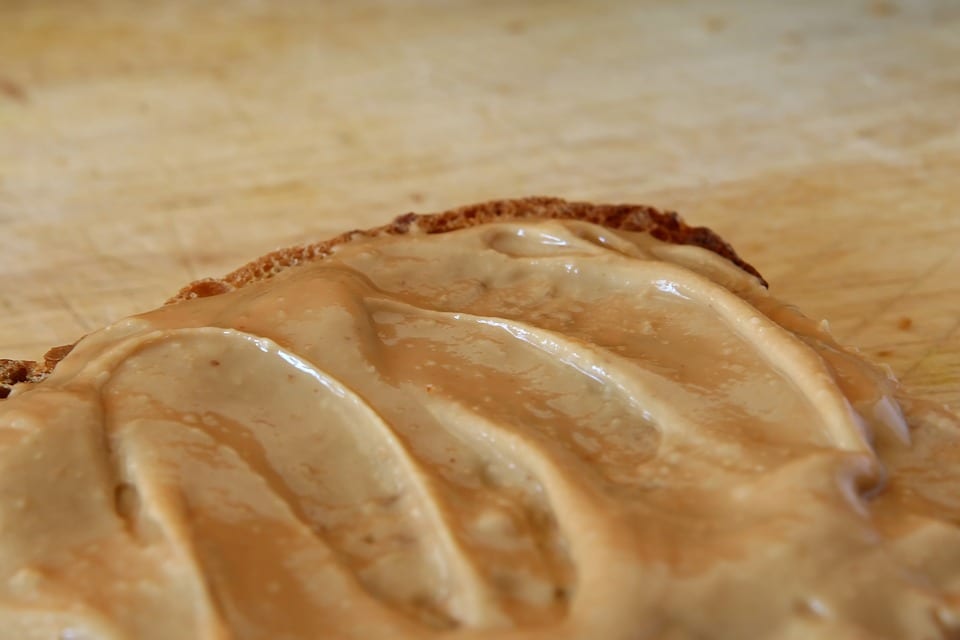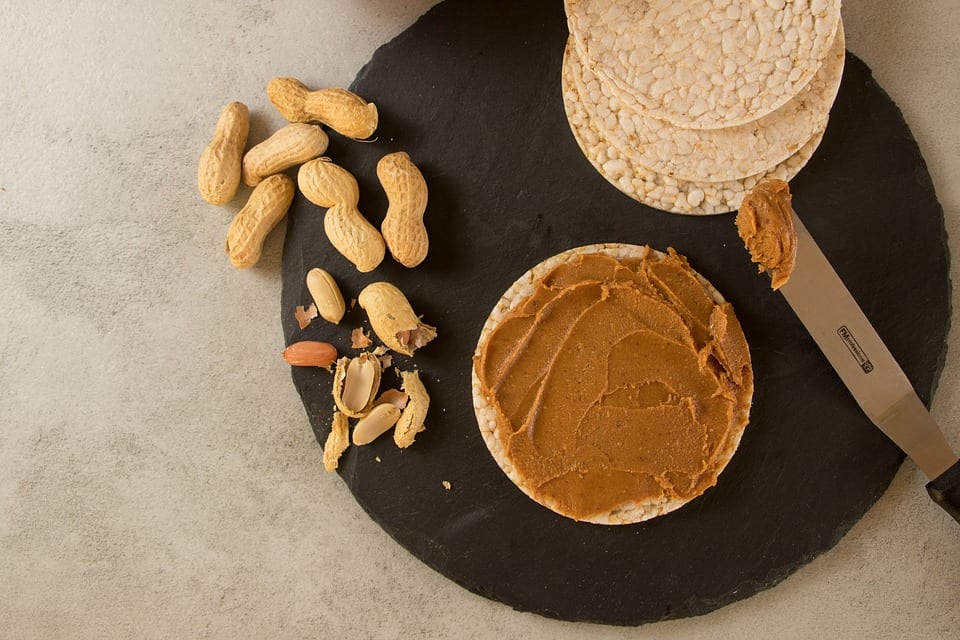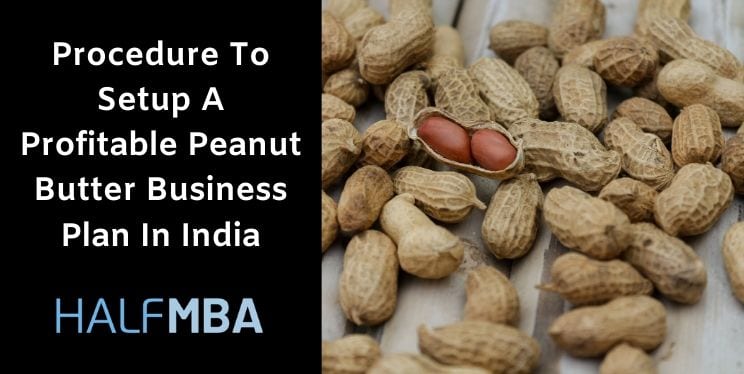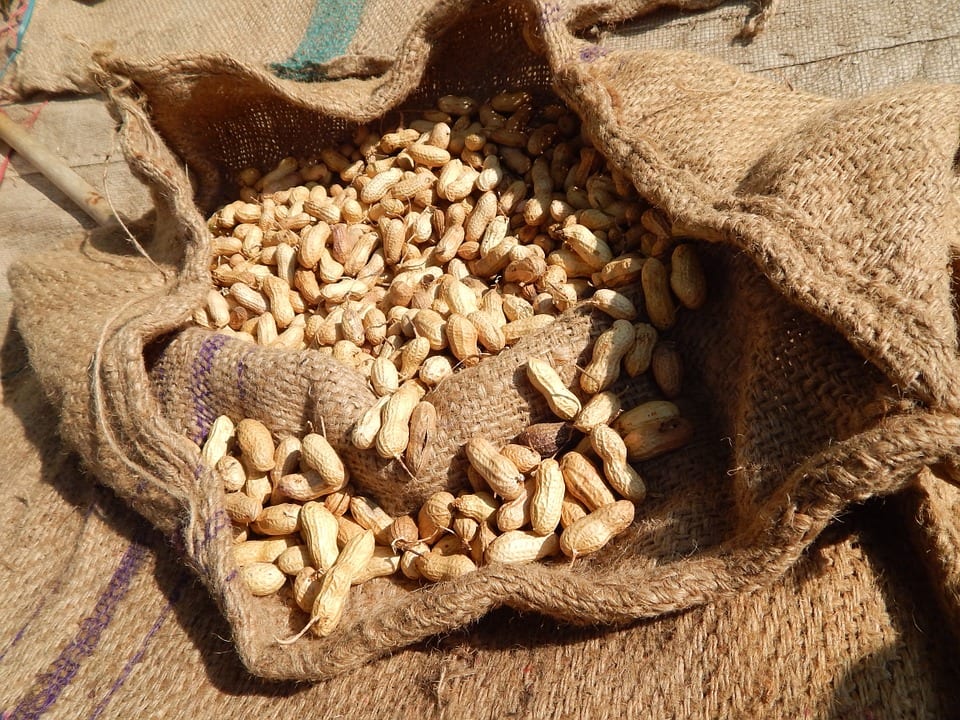Peanut Butter which is a popular spread in various countries has established itself as kids’ favorite over the years. It is found in almost every breakfast table in various countries. Through the years the product has been introduced with various flavoring agents to enhance its taste like sweeteners, salts, emulsifiers, etc.
Apart from getting consumed in its original form, the various products made with the use of peanut butter are equally famous. These products include peanut butter cookies, peanut butter cups, etc.
The ever-growing industry has given business opportunities to a lot of entrepreneurs. It is a known fact that the idea of starting a peanut butter business is a financially good decision as the demand in the market is rapidly increasing.
Most of the entrepreneurs who are just stepping into the world of business are unfamiliar with the production process of peanut butter. The strategic business plan of peanut butter production is a step by step process which will be discussed in the article below.
Apart from this, we will also discuss the types, business essentials, nutritive value, investment sources, for your peanut butter business plan.
Contents
Types Of Peanut Butter
Peanut Butter can be divided into two types, namely chunky and smooth. And as the name suggests the chunky one is the one which has a texture in it because of the presence of some non-uniformly grided peanut. On the other hand, the smooth type of peanut butter is the creamy one in which the peanut particles are evenly ground.
Peanut Butter can further also be divided on the basis of the presence of flavoring agents in it. For the enhancement in taste, the product is added with artificial sweeteners, cane syrup, salts, coconut palm sugar, white sugar, etc. These flavoring agents along with food coloring additives are added additionally. They do not affect the basic manufacturing process of peanut butter production.
How to Make Peanut Butter – Production Process
The process of manufacturing goes through a series of steps. Each step has its own significance in the whole process so they are to be studied carefully in order to understand the basics of peanut butter production.
Planting and Harvesting
Any food-based product business plan has its initial step of production as harvesting because that’s from where we get the raw material in order to carry out the further steps of production. For peanut butter business you will need your raw material as peanuts which are to be grown in the field.
Peanuts are grown into the soil and the harvesting period of peanuts is from August to October. It is advised to do the harvesting process when the weather is clear because when the field is damp, the peanuts will be stuck with a lot of soil around them.
The peanuts are picked and the vines are separated from them. After this process is done the next part of the production is carried out which is carried out at the manufacturing unit of the business.
Processing Unit
The processing unit is where most work gets done required for the peanut butter production. The processing or manufacturing unit for the production of peanut butter consists of various machinery required in each step.
1. Shelling
The shelling process is defined as the shell removing step in the processing of peanut. In this process, it is made sure that the seed does not experience any damage to it. Before actually carrying out the process, the moisture of the un-shelled peanuts is regulated in order to make sure that the shells do not become too frangible.
After this, the peanuts pass through various rollers that are placed together and the outer shell gets removed in the process. As soon as this process gets over, now its time for screening. In the screening process, the peanuts are inspected for the presence of contaminants so that the infected ones can be removed from the batch.
2. Roasting
The process of roasting of peanuts is no different than the kind that we do it at homes, the only difference is, at the manufacturing unit, the process is carried at a large scale. The process is carried out in two ways, the first is a batch method, and the second is a continuous process.
The batch method involves heating of the raw material in large quantities in a large revolving oven at a temperature of 427-degree Celsius. After this, each batch is uniformly roasted at the temperature of 160 degrees Celcius.
On the other hand, in the continuous process, the peanuts pass through the hot air coaster. The completion of the process is indicated by a photometer.
3. Cooling
The process of cooling requires the involvement of a blower-cooler dryer where the peanuts are placed immediately after the roasting process. For increasing the efficiency of the cooling process, the peanuts are placed in the metal cylinder which is equipped with suction fans.
The cooling process does not contribute to making the peanuts dry. In fact, it helps the peanuts in retaining the oil and moisture. With the help of this process, the temperature of peanut butter is brought to 30-degree celsius.
4. Blanching
The blanching process is carried out for the removal of the external coat of the peanut seeds. This process is carried by either heat blanching or water blanching.
- Heat Blanching
Heat Blanching, as the name suggests is carried out by the heat treatment of the peanuts. They are treated by hot air at 138-degree celsius for about a few minutes. As soon as this process is done, they are exposed to steam in the blanching machinery.
The skins of the peanuts are collected in waste bags and the remaining product is taken for inspection.
- Water Blanching
Water Blanching is comparatively new in the blanching process. In this process, the peanuts are arranged are passed through stationary blades and in the process, the skins of the peanuts are removed. After this, they are put in a hot water bath to help in rubbing off the skins. Then it gets dried with the help of hot air.

5. Grinding
After the raw material all ready to use, they are sent in a large grinder where it gets converted into peanut butter. To ensure the proper grinding of the peanuts they are sent through two grinders. One is for medium grinding and the second is for fine grinding.
When the peanut goes through the second grinder it gets mixed with all the necessary things that are required to convert it into peanut butter, this includes salt sugar, vegetable oil stabilizer. And in order to convert this mixture into the chunky peanut butter then chopped peanuts are added additionally.
6. Packaging
Before this process is carried out, it is made sure that the contents are cooled down to room temperature. Then peanut butter is filled into the packaging bags or jars with the help of pumps. The lids of the jar are vacuum sealed in order to prevent oxidation to ensure the preservation of food. Then the expiration date and product contents are labeled on the container and are set aside.
Business Essentials and Investment
The production of peanut butter requires setting up a manufacturing unit. And in order to set up any kind of commercial unit for business production, you are going to need land. Apart from this other business essentials are machinery, manpower, etc.
1. Location
The location of the manufacturing unit should not be compromised if not met with the required conditions. The place should be selected on the basis of proximity of the market, availability of water and electricity.
The estimated land that you are going to need for construction is 1000 square feet. The land can either be taken on lease or rent or it can be purchased if you have an enough amount to invest.
2. Machinery
From the process of harvesting of peanut for the peanut butter production to the last stage of manufacturing, that is the packaging you are going to need a series of machinery.
All the equipment and machinery required for setting up the manufacturing unit can be available in the market, to explore the online options related with peanut butter production unit, you can visit, Alibaba, Indiamart, etc.
3. Workers
Any business plan requires a staff team whose efforts continue in making the company successful. To start the peanut butter manufacturing business, you will need factory workers, managers, marketing team, accountant, cleaning staff, dealers, lab assistants, etc.
4. Funds required
The cost of everything needed in the peanut butter production from raw material extraction to manufacturing and distributing process, the estimated cost of the business plan is about Rs. 35- to 40 lakhs. However it also depends on the scale of your business plan, but this is a rough approximation.
To finance your business, there are a lot of investment sources available in the market from private investors, to venture capitalists and bank loans for business from private and government banks. All you have to do is present an impressive and lucrative business plan and if they are certain that the plan is most likely to succeed then your business will find its financing.
Nutritional Profile Of Peanut Butter
The amount of calories present in per 100 grams of peanut butter is 588 kcal. In the same quantity, the amount of carbohydrates is 20 grams which consist of three components starch, sugars, and dietary fibers which are in the amount of 4.8 g, 9.2 g, and 6 g respectively.
Apart from this, there are various vitamins present per 100 grams of peanut butter, such as Thiamine, Riboflavin, Niacin, Pantothenic Acid, Vitamin B6, Folate, Vitamin E, the quantity of these vitamins ranges from 0.11 mg to 13.2 mg.
Also, the peanut butter is enriched with various minerals like calcium, iron, magnesium, manganese, phosphorus, potassium, and zinc. The quantity of these minerals ranges from 2.7 mg to 649 mg. Also the water contents in peanut butter os 1.8 g.
Procedure of Peanut Butter Distribution
After the peanut butter is prepared through a series of steps, now its time for the distribution of your products to your clients. The more will be the distribution, the more revenue your business is going to generate at the end of the year.
The distribution of peanut butter is done in two ways, the first is the local market strategy and the second is export-oriented markets.
The hierarchy of the local market production starts at your production center. From various different sales agents, dealers would take the product and sell it to different stores and supermarkets from which it will be approachable to the general public. If the production unit has direct contact with stores and supermarkets then the need for sales agents could be removed from the process.
The second distribution method is called export-oriented markets. As the name suggests, export-oriented markets are the ones that are concerned with the exportation of goods and production to a different country. This process also starts at your production unit, from where various sales agents purchase the products and pass it to the clients at the sales point for further exportation of the product.
Benefits of Peanut Butter
Peanut butter, apart from providing a profitable business idea, is a great product of value in itself. It is not exactly a healthy choice, but it is enriched in various elements, vitamins, nutrients, etc. Following we have discussed the presence of various nutrients in peanut butter:
1. Protein Rich
Peanut butter contains 90% peanut and as the peanut is a rich source of protein it makes peanut butter a protein-rich product. Per 100 grams of peanut butter has 25-30 gms of protein which is a big number.
2. Low Cholesterol Levels
Peanut Butter has low cholesterol levels due to the presence of unsaturated fats and since they are not saturated, it doesn’t cause any heart diseases. The amount of fat present in peanut butter is really low. It is actually equal to that of olive oil.
3. Prevent Type II diabetes
The presence of unsaturated fats in the peanut butter somehow helps in preventing Type II diabetes. It is scientifically proven that if you consume peanut butter it could reduce the risk of Type II diabetes.
4. Good Source of Vitamin
Peanut Butter also serves as a good source of vitamin. Each quantity of peanut butter has various vitamins such as Thiamine, Riboflavin, Niacin, Pantothenic Acid, Vitamin B6, Folate, Vitamin E, and each one of them performs a different function.
5. Antioxidant Properties
The antioxidant properties of peanut butter are due to the presence of folate, niacin, pyridoxine, thiamine, etc. Apart from this, resveratrol is also present in peanut butter which helps in reducing the risk of cancer, Alzheimer’s disease, fungal infections, etc.
6. Prevents Cancer
Peanut Butter contains B- sitosterol which is great in fighting with the cancer cells. Also, the presence of resveratrol prevents the chances of cancer.
7. Regulate Blood Sugar Level
Peanut Butter is rich in Magnesium which is important in the development of muscle, bone, and immune systems. Apart from this, Magnesium also helps in the blood sugar level.
8. Rich In Dietary Fibre
Peanuts are rich in dietary fibers, and that automatically makes peanut butter enriched in dietary fibers too. And dietary fibers helps us with the prevention of several diseases such as cholesterol, constipation, heart diseases, etc.
Legal Authorization Of Processing Unit
To start any business plan in India there are certain rules that you will have to follow the legal acceptance of your business. To set up a peanut butter business in India, you are going to need the following licenses and permits:
- Registration of company- In order to start your own company, you will need to contact the Ministry of Corporate Affairs for registration purposes.
- FSSAI– If you wish to start any food-based business in India, you will have to get a license from FSSAI.
- GST Registration- GST registration is important for tax registration of your company.
- Fire Department- For this permit, you will have to visit the local fire department in the area and get a NOC from the concerned department of your state.

Conclusion
India serves as the second-largest producer of peanut butter in the world after China. The increasing need for peanut butter has given enough space and scope to the industry to flourish. The above article deals with the various aspects related to peanut butter production and distribution.
Peanut Butter industry is a great business plan through an entrepreneurial perspective. It can generate a huge amount of revenue if every step is executed efficiently.
Hope you enjoyed reading this article. If you have any doubts, suggestions, queries, you can always send a message in the comment section below..!!!


